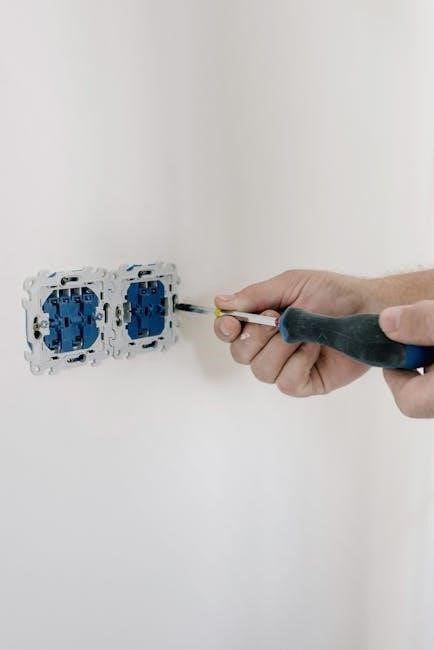
Overview of EZ Wiring Harnesses

What is an EZ Wiring Harness?
An EZ wiring harness is a pre-assembled kit designed to simplify vehicle electrical system installation. It includes labeled wires, fuse panels, and connectors. These harnesses offer an organized solution, making the wiring process easier and faster for both novice and experienced installers.
What is an EZ Wiring Harness?
An EZ wiring harness is a comprehensive, pre-assembled electrical wiring system designed to simplify the process of rewiring or installing new electrical components in vehicles. These harnesses are often used in custom car builds, restorations, and modifications, providing a streamlined alternative to creating a wiring system from scratch. An EZ wiring harness typically includes all the necessary wires, connectors, fuses, and relays required to power various electrical systems within a vehicle, such as lights, gauges, ignition, and accessories.
The key benefit of an EZ wiring harness is its user-friendly design. Each wire is typically labeled every few inches, making identification and connection straightforward. The harnesses often come with detailed instructions and diagrams, guiding users through each step of the installation process. This feature is particularly helpful for those who are not experienced electricians but want to tackle the wiring project themselves.
Available in various circuit configurations, like 12-circuit or 21-circuit, EZ wiring harnesses cater to different levels of complexity and electrical needs. The choice depends on the number of components and systems the user intends to power. High-quality materials, such as GXL cross-linked polyethylene jacketed wire, are often used to ensure durability and resistance to heat, oil, and water.
Benefits of Using an EZ Wiring Harness
Utilizing an EZ wiring harness offers numerous advantages, particularly for those undertaking automotive electrical projects. One of the primary benefits is the simplification of the wiring process. With pre-labeled wires and comprehensive instructions, users can easily identify and connect the appropriate components, reducing the risk of errors and saving valuable time. This is especially helpful for individuals with limited electrical experience.
Moreover, EZ wiring harnesses enhance the reliability and organization of a vehicle’s electrical system. By using high-quality wires and connectors, these harnesses minimize the potential for shorts, loose connections, and other electrical issues. The organized layout of the harness also makes troubleshooting and maintenance easier in the future. Instead of dealing with a tangled mess of wires, users can quickly locate and address any problems that may arise.
EZ wiring harnesses offer versatility, accommodating various vehicle types and custom setups. Whether you’re restoring a classic car or building a hot rod, an EZ wiring harness can be adapted to fit your specific needs. They often include extra circuits for future expansion, allowing you to add new electrical components without completely rewiring the system. This adaptability makes EZ wiring harnesses a worthwhile investment for any automotive enthusiast.

EZ Wiring Harness Installation Guide
Proper preparation is key to a smooth EZ wiring harness installation. Gather necessary tools, including wire strippers, crimpers, and a multimeter. Ensure a clear workspace and disconnect the vehicle’s battery before beginning the wiring process for safety.
Preparation for Installation
Before diving into the installation of your EZ wiring harness, meticulous preparation is essential. Start by gathering all the necessary tools. This includes a quality wire stripper, crimpers for secure connections, a multimeter for testing continuity, and various sizes of heat shrink tubing for insulation. A wiring diagram specific to your vehicle and the EZ wiring harness is also crucial for reference.
Next, create a clean and spacious workspace. A large, clear area, such as the floor next to your project car, is ideal for laying out the harness and easily accessing wires. Good lighting is also important to avoid errors. Disconnect the vehicle’s battery to prevent any electrical shocks or damage during the installation process.
Carefully inspect the EZ wiring harness upon unboxing. Verify that all components are present and undamaged. Familiarize yourself with the wiring diagram and the labels on each wire. Understanding the function of each circuit will make the installation process smoother and more efficient. Consider purchasing extra wire, connectors, and fuses to have on hand for any unexpected needs or modifications.
Step-by-Step Wiring Instructions
With your workspace prepped and materials gathered, begin the wiring process. Start by identifying the main power and ground wires. Connect the main power wire directly to the battery or a suitable power distribution point, ensuring a secure and reliable connection. Connect the ground wire to a clean, unpainted metal surface on the vehicle’s chassis to ensure proper grounding.
Next, route the wires to their corresponding components, following the wiring diagram closely. Work one circuit at a time to minimize confusion and potential errors. Use wire ties or cable clamps to neatly secure the wires along their path, avoiding any sharp edges or moving parts that could damage them.
When connecting wires to components, use appropriate connectors or terminals. Crimp the connectors securely onto the wires, ensuring a solid connection. Apply heat shrink tubing over the connections to insulate them and protect them from corrosion. Double-check each connection before moving on to the next circuit. Once all circuits are wired, test each one individually to verify proper functionality.
Connecting Solenoid and Alternator Wires
Connecting the solenoid and alternator wires correctly is crucial for your vehicle’s electrical system. Locate the wires labeled “Solenoid Power” and “Alternator Power” from the EZ wiring harness. For the solenoid wire, connect it to the starter solenoid, which is responsible for engaging the starter motor. This wire provides power to activate the solenoid when the ignition key is turned to the start position.
If you’re using a one-wire GM-style alternator, the alternator power wire from the harness may not be needed. However, if your alternator requires a separate excitation wire, connect the alternator power wire to the appropriate terminal on the alternator. Ensure the connection is secure and properly insulated.
When connecting these wires, be mindful of the wire gauge and current capacity. Use appropriate connectors and terminals to ensure a reliable and safe connection. If you’re unsure about any connections, consult the wiring diagram or contact EZ Wiring’s technical support for assistance. Also, make sure all connections are well-isolated to prevent any shorts.

Troubleshooting and FAQs
Encountering issues during wiring is normal. This section addresses common problems like shorts, incorrect connections, and blown fuses. Solutions involve checking wiring diagrams, verifying connections, and ensuring proper grounding for safe and effective troubleshooting.
Common Wiring Issues and Solutions
Troubleshooting electrical systems can feel daunting, but understanding common issues simplifies the process. One frequent problem is a short circuit, often caused by damaged insulation or wires contacting metal. This can lead to blown fuses and potential damage, so carefully inspect all wiring runs, paying special attention to areas where wires pass through the firewall or near sharp edges. Ensure wires are properly secured with grommets and cable ties to prevent chafing.
Another common issue is incorrect connections, typically resulting from misinterpreting wiring diagrams or mislabeling wires. Double-check each connection against the provided schematics, and use a multimeter to verify continuity and voltage. Incorrectly wired circuits can cause components to malfunction or not operate at all.
Furthermore, grounding problems can create a host of issues. Poor grounding can lead to erratic behavior of electrical components or even prevent them from functioning. Ensure that all ground wires are securely attached to clean, unpainted metal surfaces. Consider adding additional ground straps for enhanced connectivity, particularly if the vehicle has a modified chassis or body.
Finally, address blown fuses by identifying the cause before replacing them. A constantly blowing fuse indicates an underlying problem, such as a short or overload. Investigate the circuit protected by the fuse to pinpoint the source of the issue before simply installing a new fuse.
Where to Find Wiring Diagrams and Manuals
Locating comprehensive wiring diagrams and manuals is crucial for successful EZ wiring harness installation and troubleshooting. The first place to look is the official EZ Wiring website. Many manufacturers offer downloadable PDFs of their manuals, providing detailed schematics and step-by-step instructions. These resources often include color-coded diagrams that simplify the wiring process and help prevent errors.
Online forums and communities dedicated to automotive restoration and customization are also valuable sources of information. Members often share their experiences, tips, and custom wiring diagrams that can be particularly helpful for unique applications. Websites like BinderPlanet.com and various hot rod forums can provide insights and solutions to common wiring challenges.
Additionally, consider checking with automotive parts retailers like JEGS High Performance or Auto Parts Online Australia. They frequently offer wiring diagrams and technical resources to support the products they sell. Some retailers may also provide access to online databases containing wiring information for a wide range of vehicles.
Finally, don’t overlook the value of a traditional service manual specific to your vehicle. These manuals often contain detailed wiring diagrams tailored to the original factory configuration, which can be useful for integrating the EZ wiring harness with existing components. Combining these resources will provide a solid foundation for your wiring project.

Additional Resources
To ensure a smooth EZ wiring harness installation, gather necessary tools and materials. Prioritize safety by understanding electrical system precautions. These resources contribute to project success, minimizing risks and maximizing the effectiveness of your new wiring system.
Tools and Materials Needed for Installation
Before embarking on your EZ wiring harness installation, it’s crucial to gather the necessary tools and materials to ensure a smooth and efficient process. A comprehensive toolkit will not only save you time but also help prevent potential errors or damage to your vehicle’s electrical system.
Essential tools include a wire stripper, crimping tool, multimeter, and test light. A wire stripper is indispensable for preparing wires for connections, while a crimping tool ensures secure and reliable connections between wires and connectors. A multimeter is vital for testing voltage and continuity, helping you identify any issues within the wiring system. A test light can quickly verify power flow in circuits.
In addition to tools, you’ll need a variety of materials, such as wire connectors, electrical tape, heat shrink tubing, and zip ties. Wire connectors provide a secure and insulated connection between wires, while electrical tape offers additional insulation and protection. Heat shrink tubing provides a professional-looking and durable seal over connections. Zip ties are perfect for organizing and securing the wiring harness, preventing chafing and ensuring a clean installation.
Safety Precautions When Working with Electrical Systems
Working with electrical systems can be dangerous if proper safety precautions are not followed. Before you begin any wiring project, including installing an EZ wiring harness, it is essential to understand and implement these safety measures to protect yourself and your vehicle.
The most crucial step is to disconnect the vehicle’s battery. This eliminates the risk of electric shock and prevents accidental short circuits that could damage the electrical system. Always disconnect the negative terminal first, followed by the positive terminal, and secure the cables away from the battery posts.
Wear appropriate personal protective equipment (PPE), such as safety glasses and insulated gloves. Safety glasses protect your eyes from debris or sparks, while insulated gloves prevent electric shock if you accidentally come into contact with a live wire. Avoid wearing loose clothing or jewelry that could get caught in the wiring or create a hazard.
Work in a well-lit and ventilated area. Adequate lighting ensures you can clearly see the wiring and connections, reducing the risk of errors. Proper ventilation prevents the build-up of fumes from soldering or chemicals used during the installation process.